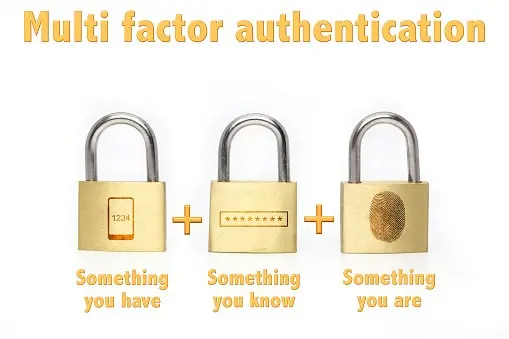Intelice Solutions: Blog

Why Is Multi-Factor Authentication A Must Have For Modern Cybersecurity?
Multi-Factor Authentication (Questions/Answers)
Maintaining strong and complex passwords may sound easy in theory but in reality, most users opt for easy to remember passwords instead. Multi-factor authentication is a great way to overcome the users’ resistance to maintaining strong passwords.
Though most companies now employ much stronger cybersecurity than they did 10 years ago, our society is light-years away from being impenetrable. Some industry experts believe we’ll never be able to fully stop all breaches from occurring.
The reasons for this vary but the most logical line of thinking is that that technology is evolving at a constant rate. With each new invention, we open another window that cybercriminals can climb through. Every new convenience we gain through technology is another potential vulnerability just waiting to be exploited.
Why Are Strong Passwords So Important?
Despite the fact that passwords are the most direct way to access a user’s private information, most passwords in use today are simply not strong or complex enough. Passwords protect email accounts, banking information, private documents, administrator rights and more – and yet, user after user and business after business continues to make critical errors when it comes to choosing and protecting their passwords.
Are you confident in your security? Find out for sure by considering these common password mistakes:
- Length and Complexity: Keep in mind that the easier it is for you to remember a password, the easier it’ll be for a hacker to figure it out. That’s why short and simple passwords are so common – users worry about forgetting them, so they make them too easy to remember, which presents an easy target for hackers.
- Numbers, Case, and Symbols: Another factor in the password’s complexity is whether or not it incorporates numbers, cases, and symbols. While it may be easier to remember a password that’s all lower-case letters, it’s important to mix in numbers, capitals, and symbols in order to increase the complexity.
- Personal Information: Many users assume that information specific to them will be more secure – the thinking, for example, is that your birthday is one of a 365 possible options in a calendar year, not to mention your birth year itself. The same methodology applies to your pet’s name, your mother’s maiden name, etc. However, given the ubiquity of social media, it’s not difficult for hackers to research a target through Facebook, LinkedIn, and other sites to determine when they were born, information about their family, personal interests, etc.
- Pattern and Sequences: Like the other common mistakes, many people use patterns as passwords in order to better remember them, but again, that makes the password really easy to guess. “abc123”, or the first row of letters on the keyboard, “qwerty”, etc., are extremely easy for hackers to guess.
In the end, creating and using strong passwords can be frustrating, but it’s incredibly important. Privacy and security are major concerns for personal users and businesses alike these days, and so you have to be sure that you aren’t making it easy for hackers to access you or your business’ private data.
What’s The Better Way To Approach Password Management?
Multi-factor Authentication (MFA) is a superior way to keep your data more secure. MFA requires the user to utilize two methods to confirm that they are the rightful account owner. There are three categories of information that can be used in this process:
- Something you have: Includes a mobile phone, app, or generated code
- Something you know: A family member’s name, a city of birth, pin, or phrase
- Something you are: Includes fingerprints and facial recognition
What are the benefits of a Multi-Factor Authentication solution?
- Bring Your Own Device: In today’s modern business world, more and more employees prefer to do at least some of their work through their mobile devices, which can present a serious security risk. However, with an MFA solution, you can enroll new employee devices in minutes, given that there’s no need to install an endpoint agent.
- Convenient Flexibility: A Multi-Factor Authentication solution won’t force you to apply the same security policies to every user in the company. Instead, you are given the capability to specify policies person by person or group by group.
How Does A Multi-Factor Authentication Solution Work?
- User logs into the session with primary credentials.
- The session host validates credentials with Active Directory.
- Then, it sends credential validation to the cloud via the login app.
- The MFA client sends its secondary authentication to the user. User approves.
- The MFA client sends approval back to the session host via the login app.
- The user accesses their session very securely.
Though MFA does make it harder for the account owner to access the account, it also makes it difficult for cyber thieves to learn your password. Their job becomes much tougher because they now need to do more than just hack your password. They’ll need personal information about the account owner. With so many accounts being too easy to break into, hackers are more likely to just move on instead of trying to break through the multiple factor authentication process.
One thing that industry experts warn about is the “set it and forget it” risk. Often, a business will set up the Multi-factor Authentication protocol, but then just assume that everything is well-protected from that point onward. In order to be as secure as possible, all network and internet security require frequent checks to make sure things are still working.
Like this article? Check out Best Productivity Apps For Project Management,
What IT Companies Provide Tech Services In Falls Church, VA? or
Who Provides Managed IT Services In Tysons Corner, VA? to learn more.




